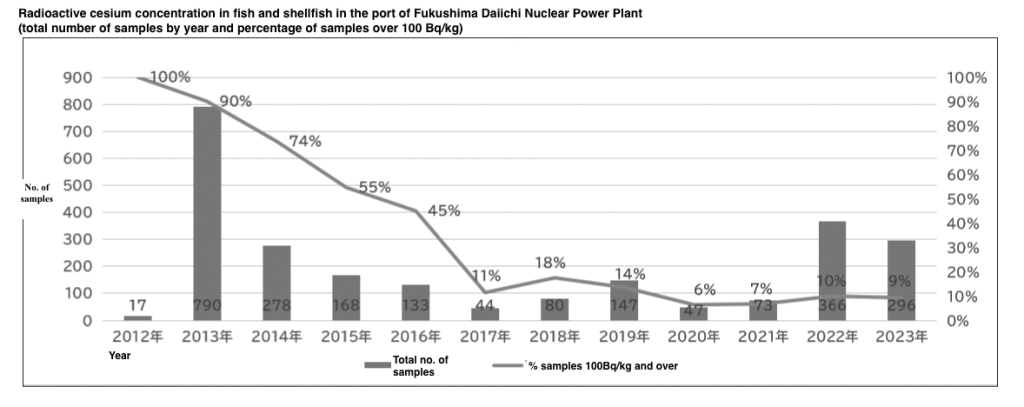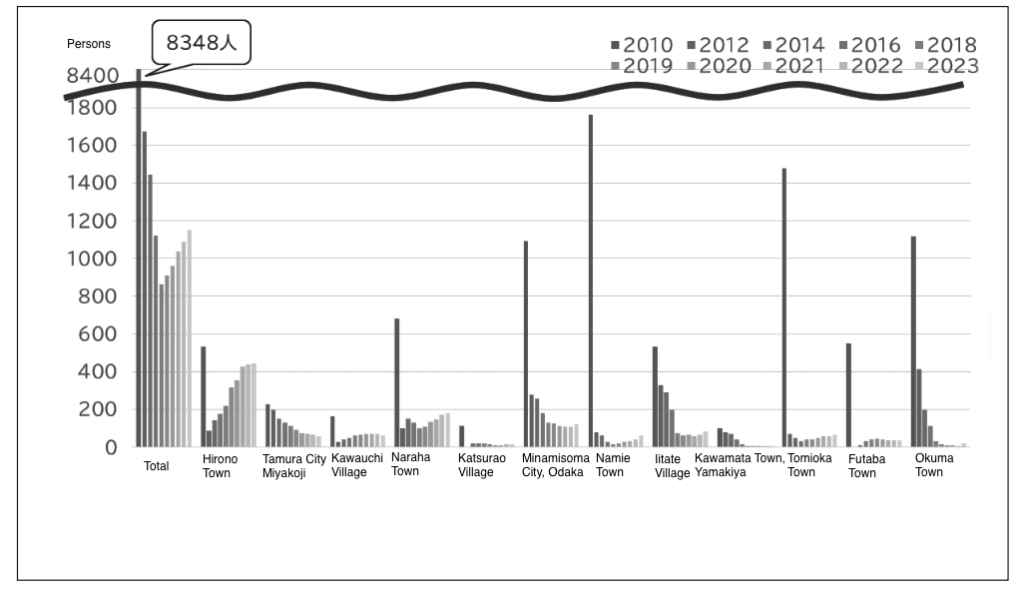Statistics concerning the Crippled Fukushima Daiichi Nuclear Power Station
Results of the testing of fish samples collected in the nuclear power plant port
Tokyo Electric Power Co. (TEPCO) is collecting fish samples in the port of its crippled Fukushima NPS and in the waters within a radius of 20 kms of the plant to test for radioactive cesium, and is publishing the data on Cs-134, Cs-137 and Cs contamination in PDF format regularly. 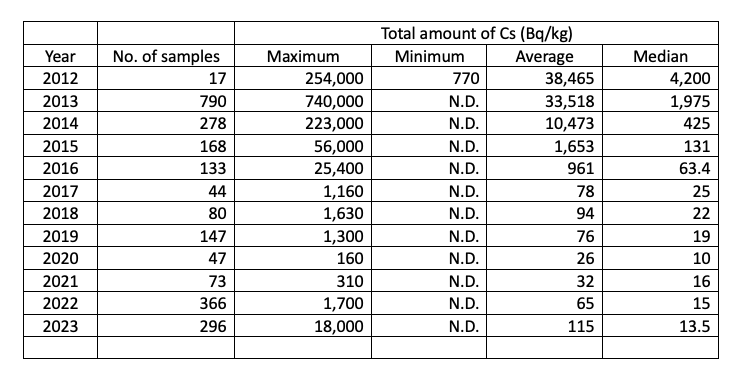 The utility began releasing the data on the fish samples from the plant’s port in October 2012. These statistics show the trend of the cesium contamination levels (Bq/kg) of the fish samples from the port. They indicate that the contamination levels continued to decline before hitting a low in 2020, and then began to gradually increase again.
The utility began releasing the data on the fish samples from the plant’s port in October 2012. These statistics show the trend of the cesium contamination levels (Bq/kg) of the fish samples from the port. They indicate that the contamination levels continued to decline before hitting a low in 2020, and then began to gradually increase again.
Situation of evacuation
These statistics show the trend in the total numbers of evacuees within and outside Fukushima Prefecture, residents living in the areas where the evacuation order has been lifted, and elementary and middle school students in Fukushima Prefecture. It was reported that the number of evacuees within and outside Fukushima Prefecture totaled 26,604 as of November 2023.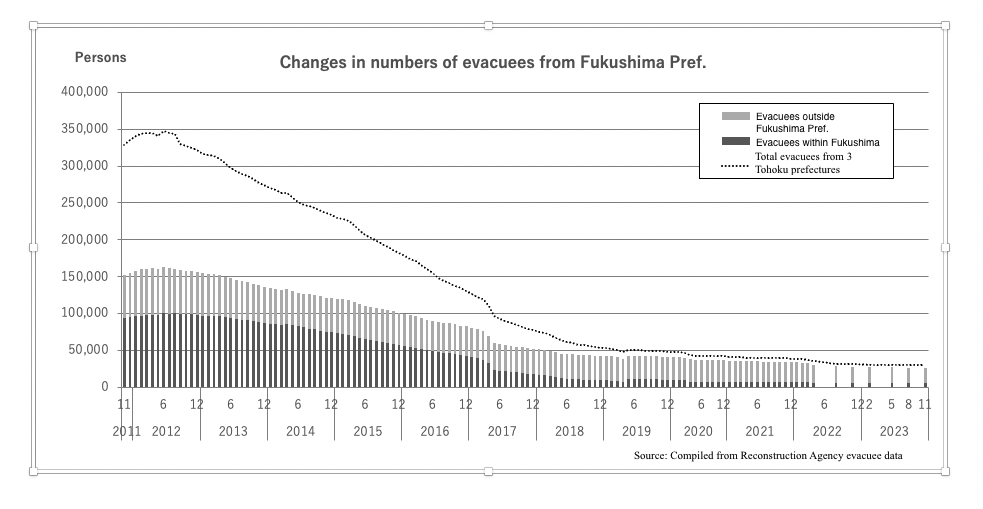 These statistics, however, do not include the number of residents who evacuated voluntarily.
These statistics, however, do not include the number of residents who evacuated voluntarily. 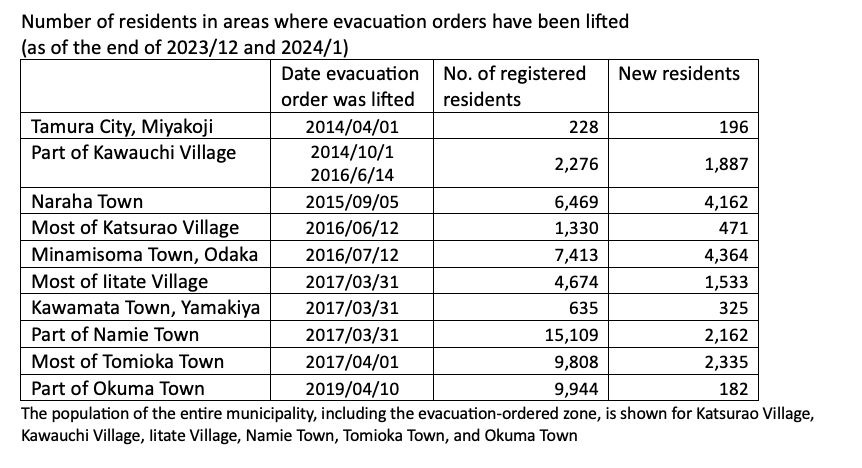 As the number of areas where the evacuation order is lifted increases, the evacuees who continue to live in such areas will be exempted from the statistics. This means that the government’s statistics do not reveal the true evacuation situation.
As the number of areas where the evacuation order is lifted increases, the evacuees who continue to live in such areas will be exempted from the statistics. This means that the government’s statistics do not reveal the true evacuation situation.
The question is, what is the true situation of the evacuees? Comparing the number of resident registrations filed by individuals in the areas where the evacuation order has been lifted with the number of the individuals currently living in such areas, there is a wide gap of around 40 thousand. If the number of voluntarily-evacuated residents are taken into account, there should be a greater number of evacuees at present. Currently, it is impossible for us to determine if the statistics show the real evacuation situation. For this reason, the statistics may give a deceptive impression that recovery from the Fukushima nuclear disaster is progressing smoothly.
The total number of elementary and middle school students in the evacuation-designated areas tumbled from the pre-disaster level of 8,348 to 1,150. In recent years, however, the total number of students is showing an upward trend. A major contributing factor behind this tendency seems to be the Futaba Future School established in Hirono Town in 2015 by the Fukushima prefectural government.

